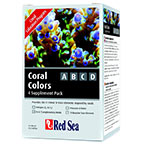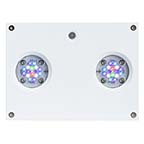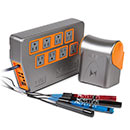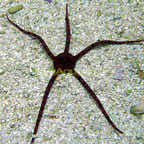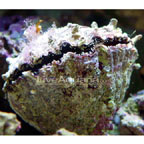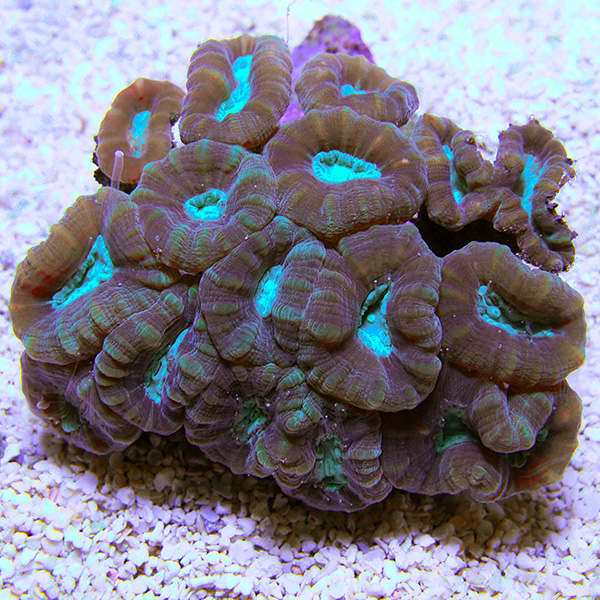

Additional locales and sizes may be available!
Additional locales and sizes may be available! Email me when availableQuick Stats
What do these Quick Stats mean? Click here for more information
What do these Quick Stats mean? Click here for more information
Overview
The Green Big Pipe Trumpet Coral is a large polyp stony (LPS) coral that often shares the common names Torch Coral, Candy Coral, or Bullseye Coral. As such, proper identification of Caulastrea echinulata is often a topic of conversation. Compared to Candy Cane Corals (Caulastrea furcata), the Green Big Pipe Trumpet Coral (Caulastrea echinulata) has more densely packed polyps with pronounced corallites that are substantially larger with taller stalks. The oral disc is set deeper within this skeletal structure, giving the fully expanded Green Big Pipe Trumpet Coral (Caulastrea echinulata) its signature appearance. The trumpet-like extensions from the skeleton expand more in this species, often obscuring the loosely-spaced stalks.
The Green Big Pipe Trumpet Coral is hardy and a relatively peaceful reef inhabitant with very short sweeper tentacles. Its genus name, Caulastrea, comes from the Latin kaulos (stalk), and aster (star) describing its skeletal structure consisting of tubular stalks with stars on each tip. Under actinic light, its colorful polyps will stand out from most other corals.
The Green Big Pipe Trumpet Coral can live under a variety of lighting conditions provided by power compacts, VHO, T-5's as well as the more intense metal halides. Alter their position in the aquarium depending on the lighting. In an aquarium lit by metal halides, the Green Big Pipe Trumpet Coral should be kept in a mid to low position. Under other lighting, the Green Big Pipe Trumpet Coral should be kept in a mid to high position. To bring out the most intense coloration of this coral, we recommend metal halide lighting along with moderate water flow.
Keep in mind that this and other species of Caulastrea can be sensitive to metal halide lighting, so take time acclimating the Green Big Pipe Trumpet Coral under metal halide aquarium lighting. Simply place the coral low in the aquarium for a few weeks until it opens fully and then slowly move the colony to the desired location.
For continued good health, the Green Big Pipe Trumpet Coral will also require the addition of calcium, strontium, and other trace elements to the water. It will benefit from additional food fed weekly in the form of chopped meaty items, baby brine shrimp or zooplankton.
Approximate Purchase Size: Small: 1-1/2" to 2-1/4"; Medium: 2-1/2" to 3-1/2"; Large: 4" to 5-1/4" ; Aquacultured: 1-1/4" to 2-1/2"




